Product Description

40dBm Iden800MHz Tetra Repeater/Signal Booster (GW-40I)
Model:
33dBm, GW-33I
37dBm, GW-37I
40dBm, GW-40I
43dBm, GW-43I
description:
The Single-Band RF Repeater (RFR) is the kind of repeater used most frequently. It has a simple structure to transparently convey and amplify the wireless signal (at the same frequency) between the BTS (Base Transceiver Station) and mobiles in single wireless network.
The Single-Band RFR is working as a relay between the BTS and mobiles. It picks up the signal from the BTS via the Donor Antenna, linearly amplifies the signal and then retransmits it via the Coverage Antenna (or the Indoor Signal Distribution System) to the weak/blind coverage area. And the mobile signal is also amplified and retransmitted to the BTS via the opposite direction.
As per operator's requirement for working frequency, two types of Single-Band RFR are available:
*Band-Selective Single-Band RF Repeater: To amplify all signals in the whole band (bandwidth is customized);
*Channel-Selective Single-Band RF Repeater: To amplify only the signals transmitted in the customized channels.
Features:
* Aluminum-alloy casing with IP65 protection has high resistance to dust, water and corroding;
* Highly selective channel selector can process multiple channels simultaneously;
* No interference to BTS by adopting linear amplifier with high gain and low noise;
* Adopting filter with highly selectivity and low insertion loss eliminates interference between uplink and downlink;
* USB port provides a link to a notebook for local supervision or to the built-in wireless modem to communicate with the NMS (Network Management System) that can remotely supervise repeater's working status and download operational parameters to the repeater.
The RF Repeater is mainly applicable to such case:
*The repeater can find an installation place which can receive pure BTS signal at strong enough level and can meet the requirement of isolation to avoid self-oscillation;
*And the distance between the BTS and the area to be covered is 2km around.
Application:
To expand signal coverage of fill signal blind area where signal is weak or unavailable.
Indoor: Hotels, Home, Basements, Shopping Malls, Offices, Parking Lots, etc
Outdoor: Airports, tourism regions, golf courses, tunnels, factories, mining districts, villages, highways
| Specifications | |||
|---|---|---|---|
| Working Frequency (customizable) | Uplink (MHz) | 806-824 | |
| Downlink (MHz) | 851-869 | ||
| Max. Input Level (Non-Destructive) | -10dBm | ||
| Max. Output Power (customizable) | 40dBm | ||
| Max. Gain | ≥ 90dB | ||
| ALC & AGC | Min. 20dB | ||
| Gain Adjustment Range | 1~31dB @ step of 1dB | ||
| Voltage Standing Wave Ratio (VSWR) | < 1.5 | ||
| Noise Figure | ≤ 6dB | ||
| In-Band Ripple | ≤ ±3dB | ||
| Spurious Emission | ≤ -30dBm | ||
| Adjacent Channel Power Ratio (ACPR) | P ≥ 31 dBm | (Offset 5MHz) ≥ 33dBc, (Offset 10MHz) ≥ 33dBc | |
| P < 31 dBm | (Offset 5MHz) ≥ 20dBc, (Offset 10MHz) ≥ 20dBc | ||
| System Delay | ≤ 5.0μSec | ||
| Duplex Model | Frequency Division Duplex (FDD) | ||
| I/O Impedance | 50Ω | ||
| RF Connector | N-Type (Female) / changeable / bottom of casing | ||
| Temperature Range | Operation: -25°C ~ +55°C / Storage: -30°C ~ +60°C | ||
| Relative Humidity Range | ≤ 95% (non condensing) | ||
| Power Supply (customizable) | DC -48V / AC 220V, 50/60Hz / AC 110V, 50/60Hz | ||
| Backup Power Supply (optional) | 4 hours | ||
| Casing Level | IP65 | ||
| Dimensions | 428mm X 328mm X 220mm | ||
| Weight | ≤ 30kg | ||
| NMS Monitoring Function (optional) | Real-time alarm for door status, temperature, power supply, LNA, VSWR, self-oscillation, etc. Remote control such as turn on/off, increasing/decreasing output power, etc. Real-time status for output/input power, UL/DL gain, all status of repeater etc. | ||




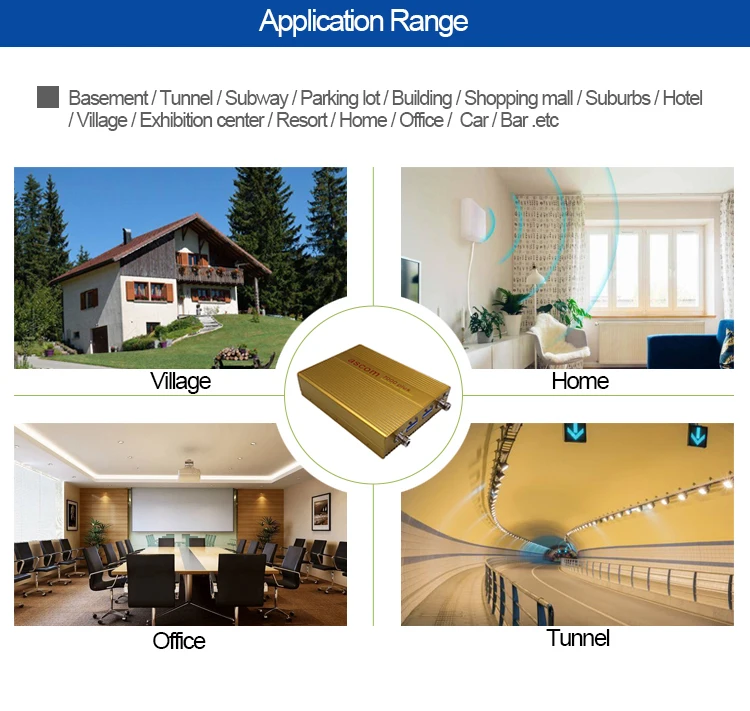

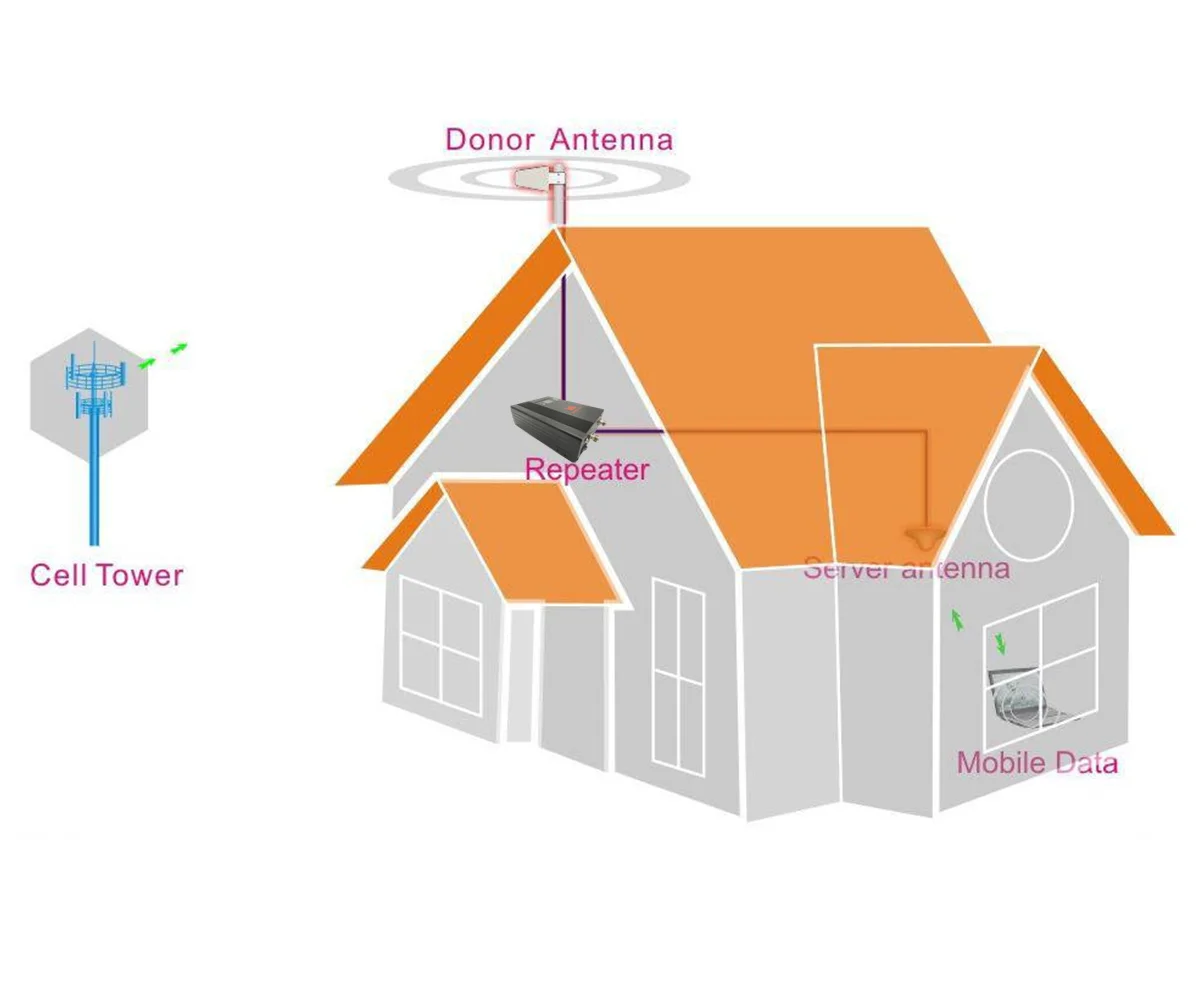
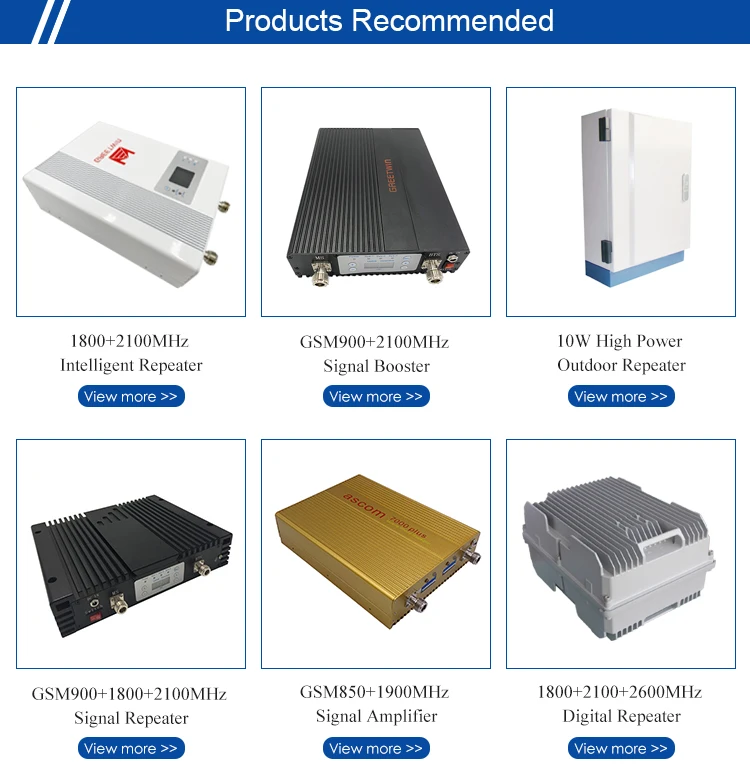
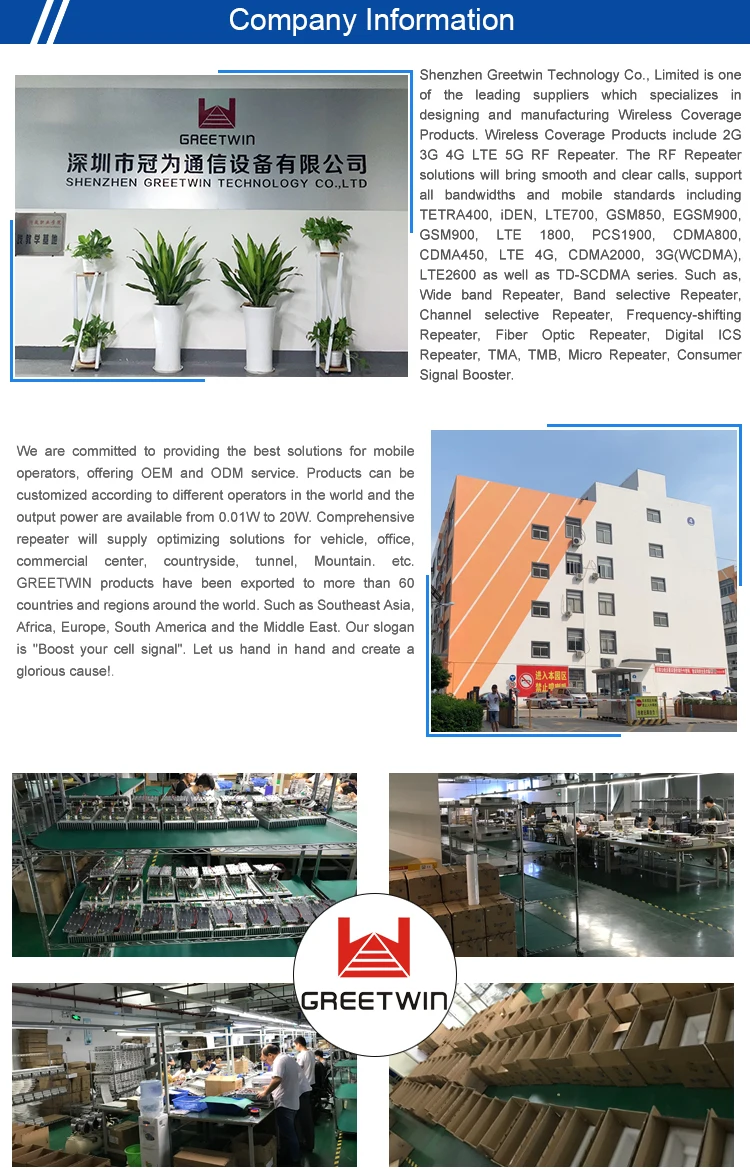
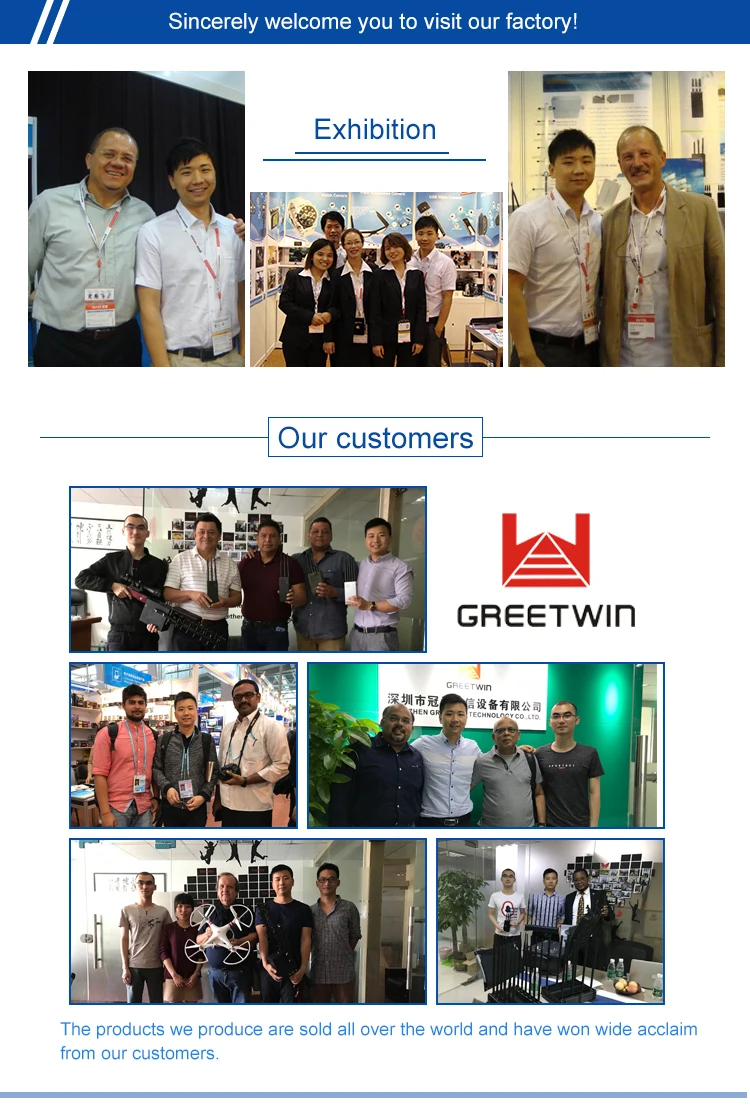
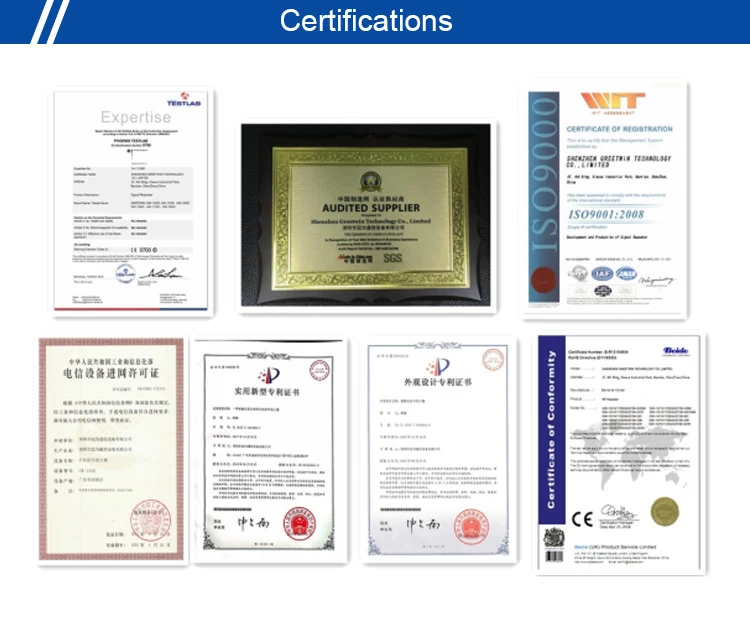


Q1. Why is there still no signal after installing the equipment?
1. Check the power on booster and power supply.
2. Check the connector of outdoor antenna is tight or not.
3. Check the connectors of RF cable are tight or not.
4. Check the outdoor signal is strong enough or not.
5. Check to make sure the antenna is installed correctly.
6. Check the connector of indoor antenna is tight or not.
7. Check the cable type is suitable or not.
Q2. Why the signal strength is too weak on the edge of area?
1. Check the outdoor signal and antenna direction.
2. Check booster is full gain or not.
3. Check all of the connectors are tight.
4. Change the location of outdoor/indoor antenna.
5. Check the cable type is suitable or not.
6. Deploy more indoor antennas.
Q3. After running booster, why the signals are not stable?
1. Checking the distance between donor antenna and server antenna are too close to each other? Check LED
of booster to
make sure alarms are green.
2. Checking the signals from donor antenna whether to be stable or not?
3. Connect the system again if it is incorrect connection.
Q4. Why the booster power LED is not bright?
1. Checking the input AC power range indicated on power adapter whether is corresponding to the local
power system.
2. Checking the power adapter whether connect the equipment correctly and stably or not.
3. Checking the power adapter whether damage or not. To test output voltage whether be corresponding to
that indicated on power adapter or not by multimeter